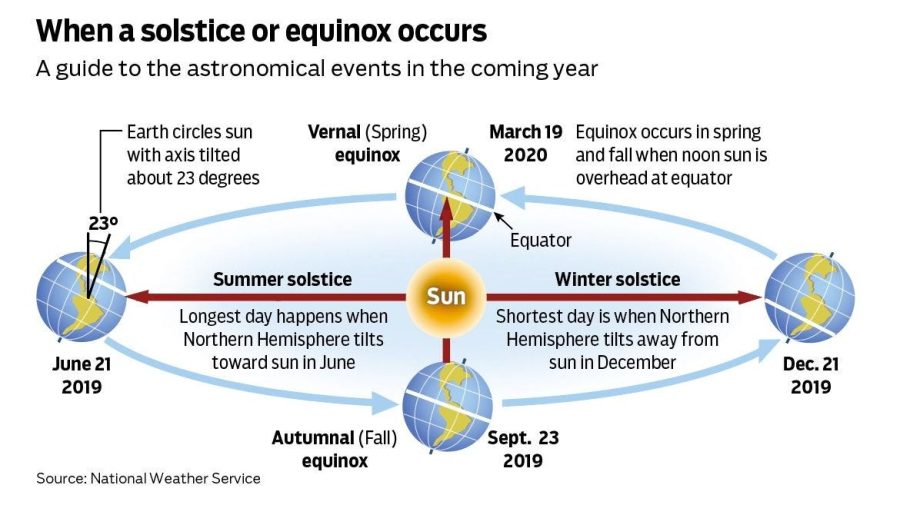Daylight Saving Time: Exploring The Concept
October 28, 2022
Daylight saving time (DST) has been debated and discussed amongst individuals for years. Many have presented the argument that the law of conservation of energy states, “energy can neither be created nor destroyed.” Does the same law apply to time? Where does the extra hour go? When did we all unanimously decide to follow this principle?
In simpler terms, DST is a European practice of advancing clock times during the warmer months of the year. In the United States, DST always starts on the second Sunday of March and ends on the first Sunday of November. This year, DST is taking place from March 13 to November 6. Arizona and Hawaii are the only U.S. states that do not partake in this tradition.
“I like it [daylight saving time] because it shows the distinction between winter and summer. It adds some spice to the year, and I just prefer it not to be dark,” junior Maggie Powell indicated.
In March, the clock “springs forward” an hour, meaning that the clock time will go from 1:59 AM to 3:00 AM rather than following the normal chronological course to 2:00 AM. In November, the clock “falls back” an hour, meaning that the clock time will go from 1:59 AM back to 1:00 AM rather than following the normal chronological course to 2:00 AM. The purpose is so that the sun rises and falls at a later clock time for optimal daylight hours. No time is actually lost in this process, contrary to popular belief. It is rather a shift of clock time.
The four months where the U.S. is not on DST (Nov. 7-Mar. 12) is when the U.S. reaches the winter solstice. Throughout this period, the northern hemisphere receives nine hours of daylight, as this half of the earth is now farthest from the sun.
The eight months where DST is being observed (Mar. 13-Nov. 6) is when the U.S reaches the vernal equinox and summer solstice. In this time period, the northern hemisphere is closest to the sun, providing the U.S. with up to 15.5 hours of daylight regardless of the clock time.
A common misconception suggests that the agriculture industry came up with this idea to give farmers more daylight hours to spend working in the fields. Farmers have historically been vocal about being opposed to DST, as it interferes with their routines. Most actually preferred to use seasons and the sun as a time indicator rather than a clock to establish their daily schedules.
According to researcher Mathew Gundersen, Germany and Austria were the first countries to use DST in 1916. However, Benjamin Franklin is often credited with inventing the concept when he satirically suggested that Parisians alter their sleeping habits to save money on lamp oil and candles. DST was officially instilled in the U.S. with the Standard Time Act of 1918 to extend the “working day” during World War I.
In modern times, DST is generally accepted as a way to save energy using the argument that “waking up with the sun” amounts to less energy use in homes and businesses, and circling back to the Act of 1918, ultimately extends the working day and time for outdoor activities.
When attention was brought to the fact that DST is coming to a close this year, students here at Central Hardin were very opinionated about the subject.
“For a week each year you get awful sleep, which leads you to be unhappy, ultimately leading you to live a shorter life. So, it [daylight saving time] is stupid,” senior Caroline Mann expressed.
“I like getting an extra hour of sleep, but I think we should just stay with the same time, all of the time,” junior Harper Lewis revealed.
If you feel the same way as Mann and Lewis, you’re in luck. On March 15, the U.S. Senate unanimously passed the Sunshine Protection Act. The bill proposes that all states go on permanent DST, which is one hour later than standard time. If passed, the law would be enforced by November 2023. 19 states have enacted legislation for indefinite DST, one of them being Kentucky.
In the meantime, make a note to “fall back” on November 6 and enjoy that “extra hour” of sleep.

















